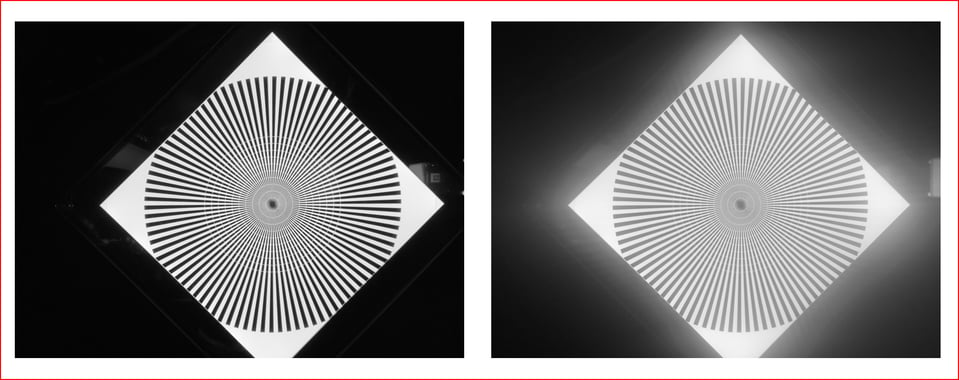
Blogs
Evaluating Second-Hand Smartphone Cameras with Advanced Machine Testing
When selling a pre-owned smartphone, sellers face the challenge of accurately describing the device's overall condition, both in terms of appearance and functionality, to ensure that the buyer's expectations are met and the price is fair. One aspect of the overall condition is the functionality of the camera. This article focuses on common defects in pre-owned smartphone cameras and provides examples of real-life issues that have been identified through an automated smartphone-testing system.
Defect categories
In the following section, three common examples of camera defects are presented.
First category: Camera module malfunction
The camera hardware may not function at all, which causes the camera application not to start, or it starts, but the image is just black, or the device just fails to take any pictures. It may also happen that parts of the image buffer are injected with data that represents a completely different image or possibly other memory content. Below is an example of such a malfunction.
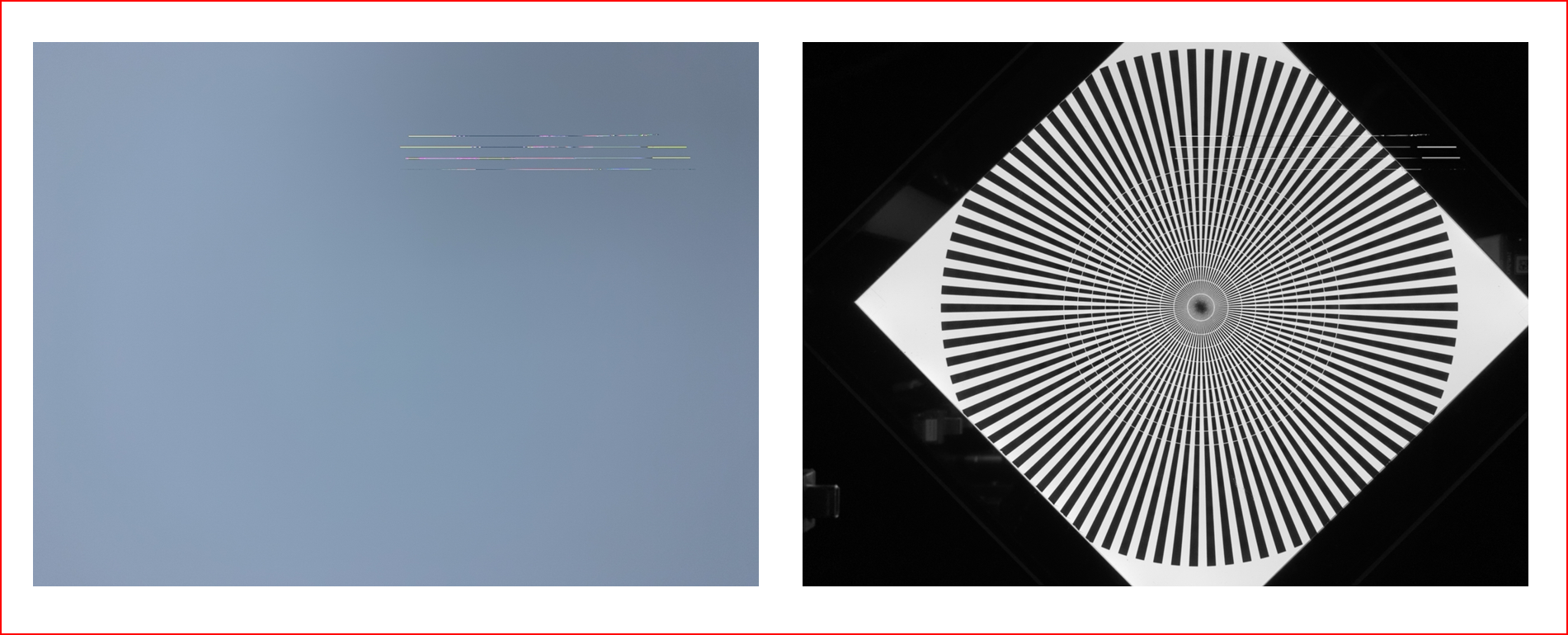
The image sensor can also have hot or dead pixels, as shown below. The right image is a magnified cropping of the left image where the red rectangle is drawn.
![]()
Second category: Spots or haze
The second category is that images and videos can be captured, but there are spots or other extra patterns that are not supposed to be there. These can be caused by dust, which is either right on top of the sensor, in the lens, or in the cover glass. The spots seen below are likely to reside on top of the image sensor.
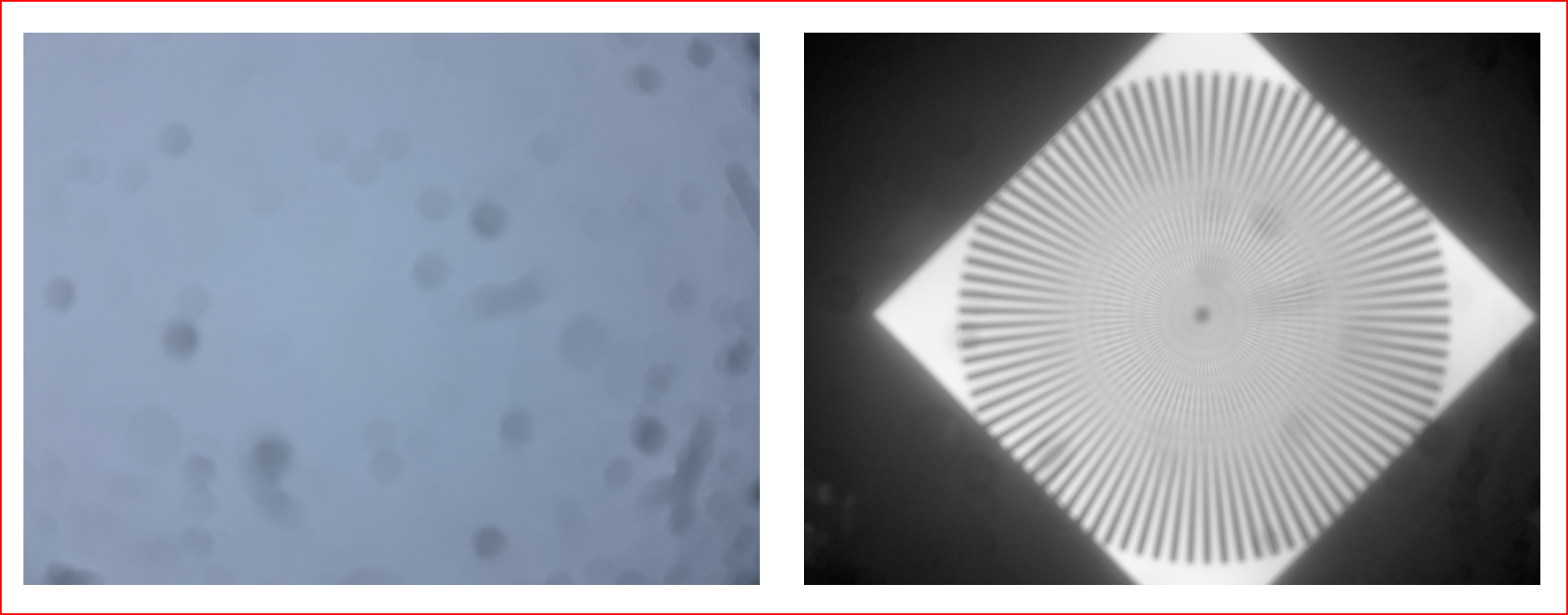
The camera cover glass can also have scratches or dirt, and that may cause blurring and haze over the whole image area instead of patterns with clear boundaries. Below, the left image represents a perfect camera, and the right image represents a device that produces hazy images because of defective cover glass or lens.
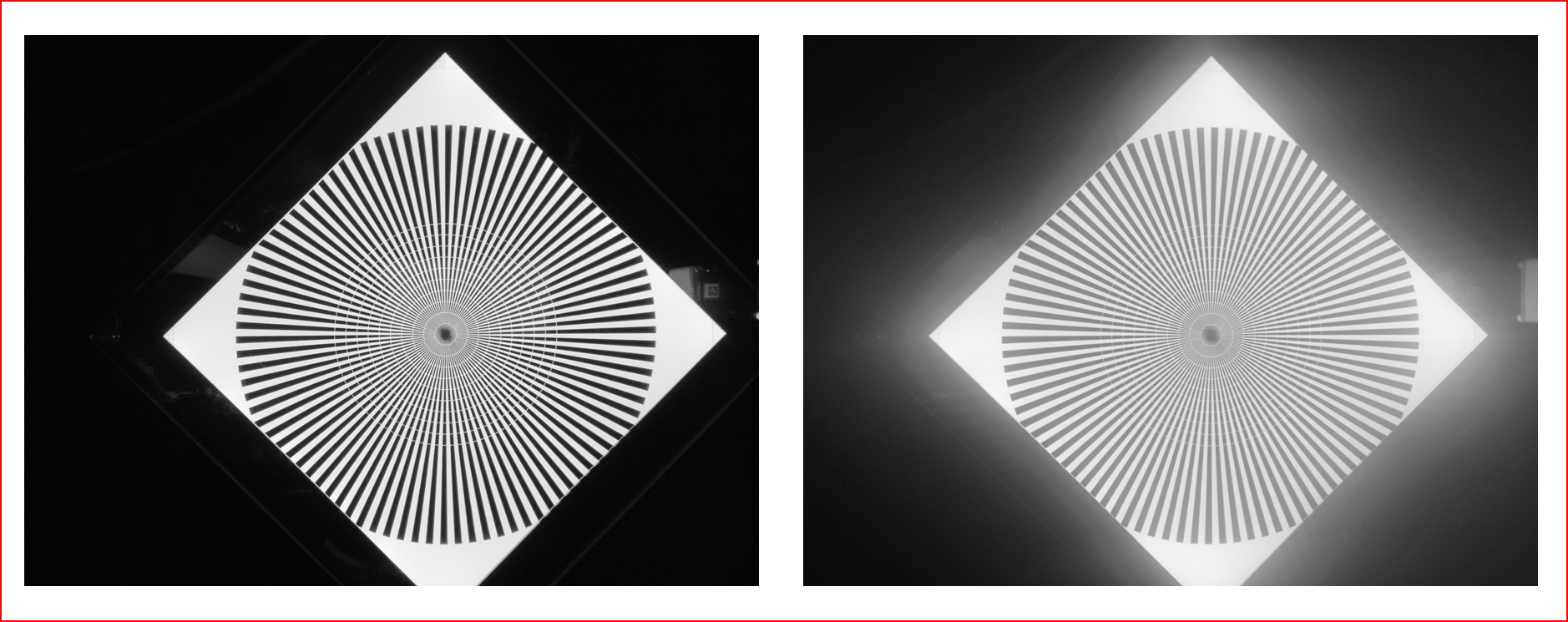
Typical for these extra artifacts is that they may appear and disappear when the zoom is changed. This is because the dirt is in one physical camera device, and when the zoom changes, the imaging camera is switched between ultra-wide, wide, and telephoto cameras.
Third category: Out-of-focus images
The third category is out-of-focus images. This is typically caused by the focusing mechanism being stuck into some fixed position or having limited adjustability. Depending on how the mechanism is defective, objects at a certain distance may still be in very good focus, but more distant or closer objects are out of focus.
Manual vs. automated testing
In manual testing, the first category is a clear-cut judgment. The camera either works or it does not. The two other categories, however, can be quite difficult to assess in a consistent and repeatable way by just looking at the quality of the captured images, and a numerical analysis is recommended.
In order to get consistent, repeatable, and comparable assessments of the camera condition, the imaging conditions should be as constant as possible, including the imaged target properties, ambient lighting, and device positioning. The numerical analysis of the captured image should produce readings that correlate with the perceived quality of the image.
The purity (or uniformity) of the image can be checked by positioning a uniformly lighted target as close to the camera as possible and taking a picture. Any deviation from a uniform image can then be accounted for as being a deficiency. Below is a collection of test images of uniform target having varying a amount of defects.
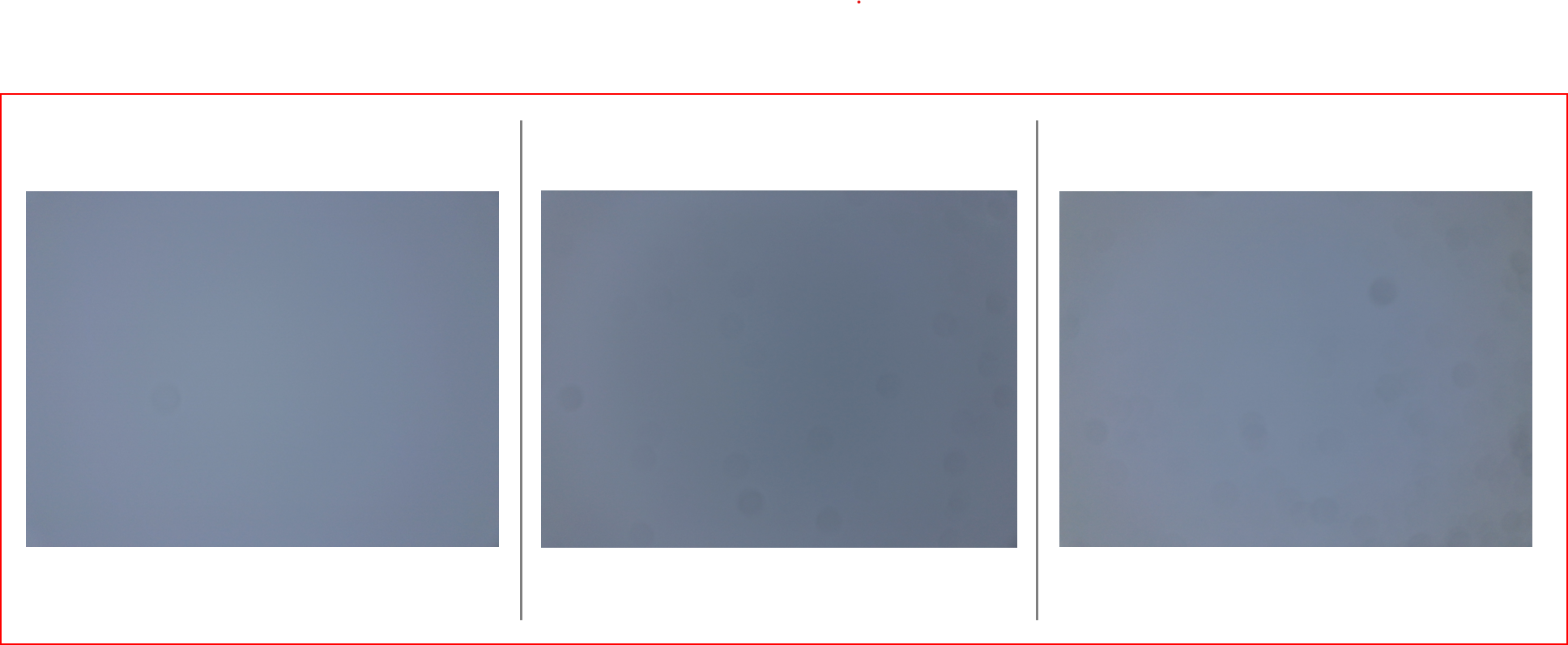
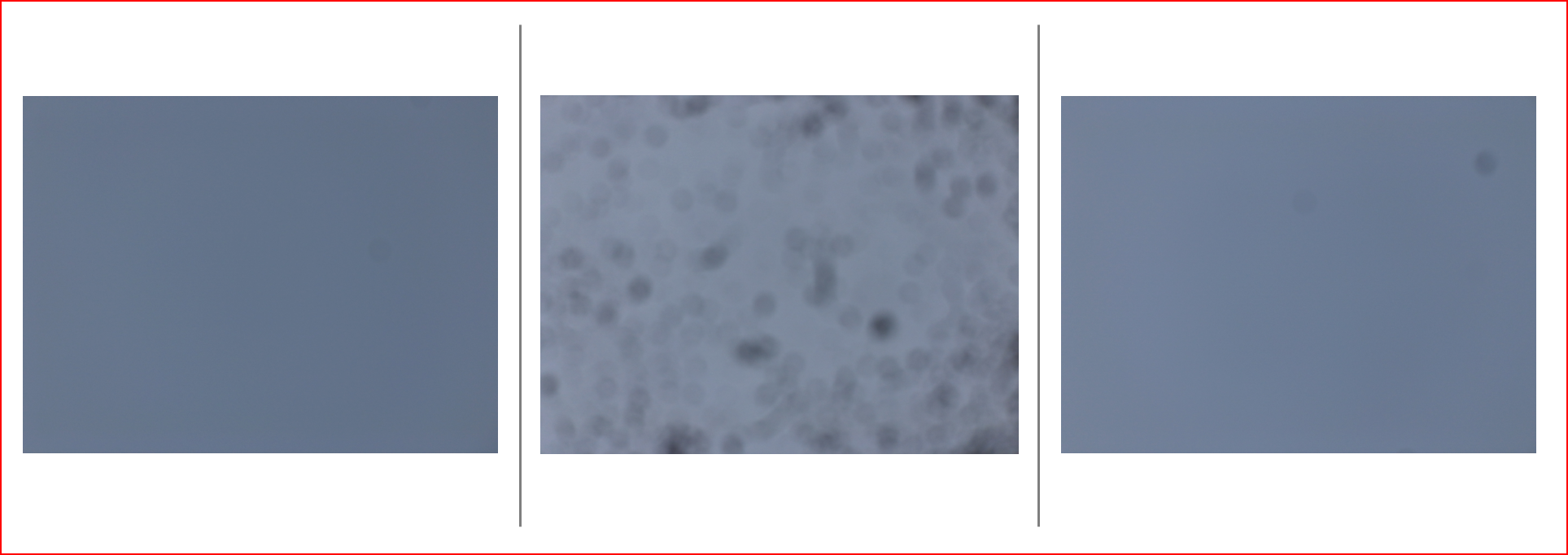
The ability to focus to a certain distance can be checked by using a target with a lot of high-contrast details and computing a reading that correlates with the sharpness of the image. Below is a collection of these test images. One is in perfect focus. Others are more or less out-of-focus, indicating that the smartphone camera is likely to produce out-of-focus pictures, at least at this distance.
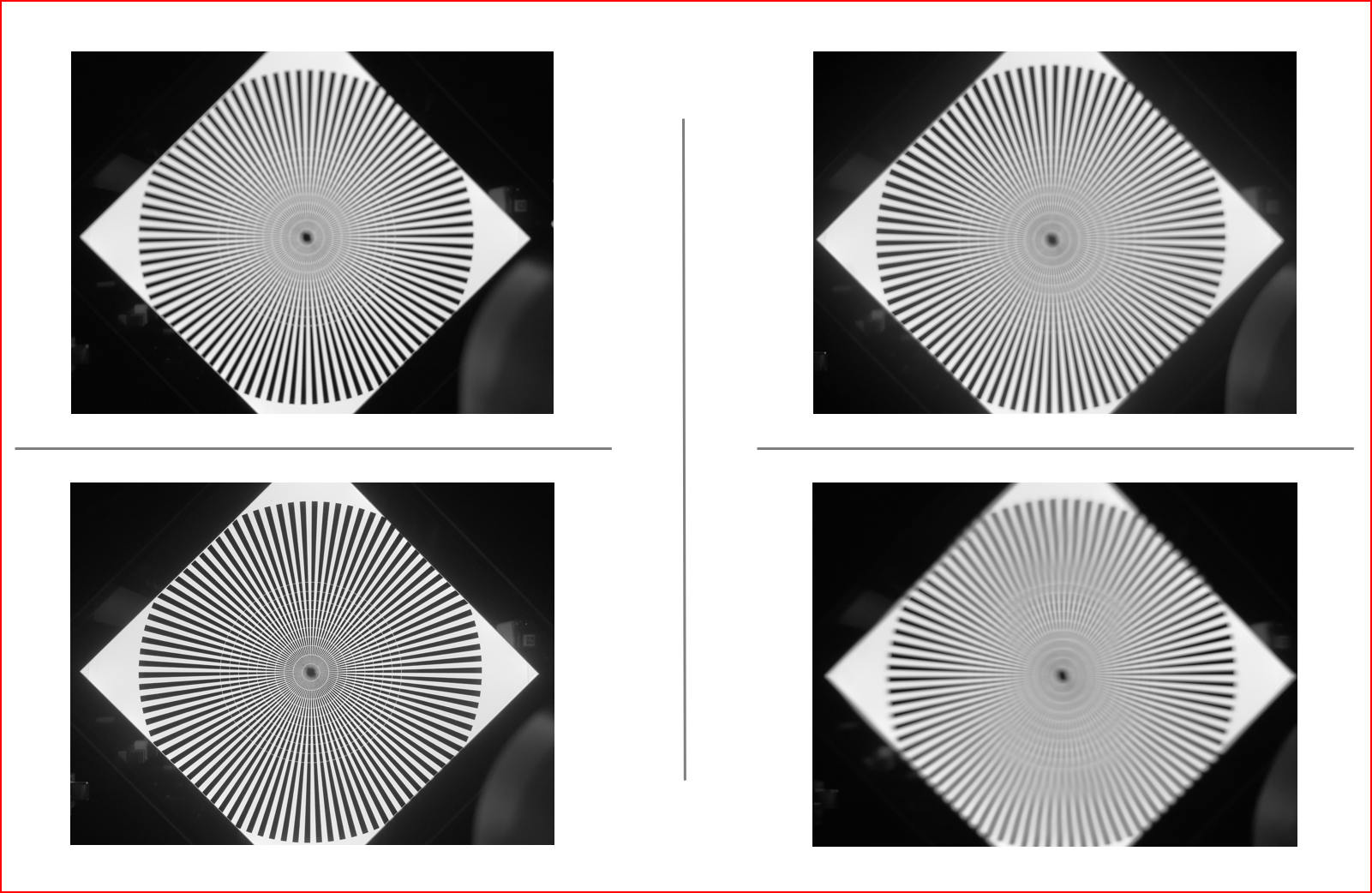
All these tests, as well as numerous other test cases that check the functionality of a pre-owned smartphone, can be tested with OptoFidelity's FUSION. FUSION is a compact test system for complete functional testing for pre-owned smartphones.
The images used show the evaluation of FUSION's camera test and demonstrate how precisely the system can detect even the smallest changes in the functionality of the camera module.
Learn more about FUSION here or talk directly to one of our experts and get more information about our products. Contact us now.
Written by


